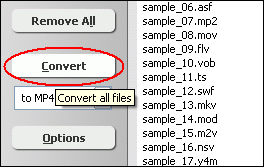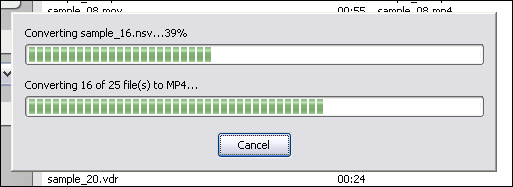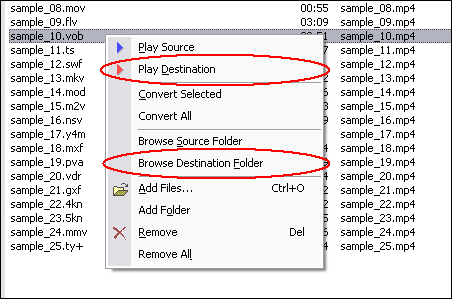MPEG to DIVXMPEG to DIVX Converter, Convert MPEG to DIVX |
 |
| Home | Getting Started | Download | Buy Now! | Screen Shots | FAQ | Support | Contact |
This article guides you how to converts MPEG to DIVX by a few clicks with an easy-to-use conversion software. The software supports common formats, device, and codecs, such as HuffYUV, Archos, DV, OGG, BlackBerry, Apple TV, SWF, 3G2, iPhone, iPad, etc. It could convert MPEG to Vorbis, DVD to Zune, WebM to DV, FLV to PSP, VOB to VOB (DVD Video), OGV to Motion JPEG, MP4 to ASF, 3G2 to M4V, and so on. MPEG to DIVX conversion software supports batch conversion. You could convert bulk of MPEG files to DIVX at a time. And, the software is full compatible with Windows 10/8/7/Vista/XP/2000 including 32-bit and 64-bit editions.
What is MPEG? The MPEG standards consist of different Parts. Each part covers a certain aspect of the whole specification. The standards also specify Profiles and Levels. Profiles are intended to define a set of tools that are available, and Levels define the range of appropriate values for the properties associated with them. MPEG has standardized the following compression formats and ancillary standards:
In addition, the following standards, while not sequential advances to the video encoding standard as with MPEG-1 through MPEG-4, are referred to by similar notation:
Moreover, relatively more recently than other standards above, MPEG has started following international standards; each of the standards holds multiple MPEG technologies for a way of application. For example, MPEG-A includes a number of technologies on multimedia application format.
What is DIVX? There are two DivX codecs; the regular MPEG-4 Part 2 DivX codec and the H.264/MPEG-4 AVC DivX Plus HD codec. It is one of several codecs commonly associated with "ripping", whereby audio and video multimedia are transferred to a hard disk and transcoded. The "DivX" brand is distinct from "DIVX", a former video rental system developed by U.S. Circuit City which required special discs and players to function. The winking emoticon in the early "DivX ;-)" codec name was a tongue-in-cheek reference to the DIVX system. Although not created by them, the DivX company adopted the name of the popular DivX ;-) codec. The company dropped the smiley and released DivX 4.0, which was actually the first DivX version, trademarking the word, DivX. DivX Plus HD is a marketing name for a file type using the standard Matroska media container format (.mkv), rather than the proprietary DivX Media Format. DivX Plus HD files contain an H.264 video bitstream, AAC surround sound audio, and a number of XML-based attachments defining chapters, subtitles and meta data. This media container format is used for the H.264/MPEG-4 AVC codec. Step-by-Step Instructions to Converting MPEG to DIVX
 Click "Add Files" to choose MPEG files and add them to conversion list.  Choose one or more MPEG files you want to convert and then click Open.  [Optional, for advanced user] If you want to change DIVX encoding parameters, for example, vodec codec, bit rate, frame rate, video size, and aspect ratio, please click "Options".   [Optional] Switch to tab "Video & Audio" and then choose "DIVX" at "Output Format", and then set encoding parameters. Tips: If the original file was copied from a DV such as Panasonic, SONY, Canon, you could enable "Deinterlace pictures" to improve output pictures, and you could set aspect ratio for the file.  Click "Convert" to convert MPEG files to DIVX.  The software is converting MPEG to DIVX.  When conversion completes, you can right-click converted item and choose "Play Destination" to play the outputted DIVX file; or choose "Browse Destination Folder" to open Windows Explorer to browse the outputted DIVX file. MPEG to DIVX Conversion Software is 100% clean and safe to
install. It's certified by major download sites. Convert MPEG to DIVX Related Topics:
|
| Home | Getting Started | Download | Buy Now! | Screen Shots | FAQ | Support | Contact | Links |
| Copyright © 2008-2017 Hoo Technologies All rights reserved. Privacy Policy |

